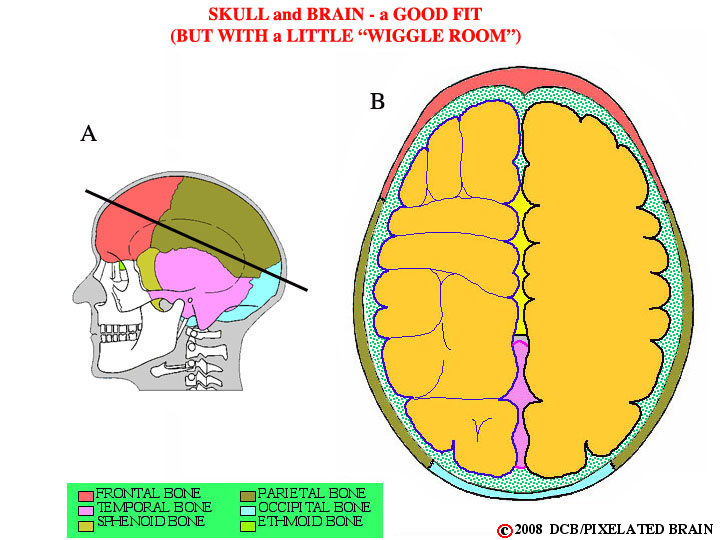
PIXBRAIN HOME _ _ MOD 1 HOME _ _ previous _ _ FIGURE 1-6 _ _ next _ _ I WANT TO
- - Certainly, the most important function of the skull is to protect the fragile brain, lying within the cranial cavity. As this view indicates, the skull is well-designed for the job. If we cut through the calvarium in the plane shown in A and look down from above we get view B. The contour of the brain's surface matches that of the cranial cavity rather well, but there is a small space between the two. This narrow gap, shown by green stippling in the figure, is called the subarachnoid space. It is filled with cerebrospinal fluid (CSF) and also contains three membranes known collectively as the meninges. The brain is, in a sense, floating in CSF which protects it from "bumping into" the skull during sudden movements of the head. From a clinical point of view, the anatomy of this region is extremely important and we want to look at it in detail. The best way to start is to consider CSF - where does this fluid come from, how does it get into the subarachnoid space, where is it going, and how does all this relate to the meninges? To come up with the answers, we will jump around a bit. First, let's look at a few views taken from an old lecture on brain development.